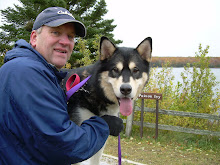Mark Ladwig was born and raised in Moorhead, MN, just across the Missouri River from Fargo, North Dakota. Like many kids in his town, Mark first laced on skates to play hockey but switched to figure skating when he was twelve. While in high school he met future wife Janet and they attended prom together, but just as friends. After graduation they stayed friends as Janet went on to college at North Dakota State and Mark pursued his dream to become a Olympic skater and moved to Bradenton, Florida to begin training at the Ellenton Ice and Sports Complex. They married in 2006 and their son Holden was born this past September.
Ray dropped out of school at fifteen. He had many jobs from ambulance driver to salesman. In his early fifties he decided to chase his dream and talked the owners of a California drive-in restaurant to sell him a franchise. Today the restaurant chain Ray Kroc founded, McDonalds, has over 31,000 restaurants serving 47 million customers each day.
Since leaving home ten years ago, Mark has worked as a busboy and server in several restaurants, driven the Zamboni at the ice arena and even was a part time disc jokey at a country radio station all the while training full time. A typical day finds him starting his training at 7 a.m. completing just in time to work at the Beach Bistro restaurant from 4 p.m. to midnight. Wife Janet worked as an interior designer until being laid off early in 2009 eventually taking a job at a local Target store. To pay for his training, which runs about twenty-thousand dollars a year, the couple has had to juggle finances and credit cards plus work odd jobs to make ends meet.
Mark and Janet Ladwig are just one example of what it takes to chase a dream.
In publishing, each day I receive several submissions from prospective authors. While some understand what it takes to achieve their dreams it is amazing how many have no idea that the road to publishing success is filled with hard work, sacrifice and even street smarts. Writing a book is just the beginning. Making the book content as good as can be requires a talented support team of editors, designers and proofers. Success in the marketplace is often dependent on the author's willingness to invest in and to work countless hours to get his or her book content in front of the right audience. It is every bit as difficult as the dream millions have of one day becoming an Olympian.
Take away questions:
- What are your dreams?
- Are they realistic?
- How are you pursuing them?
- Do you have the willingness and determination to chase your dreams?
Final thought:
Don't give up, it is never too late to chase your dreams.



